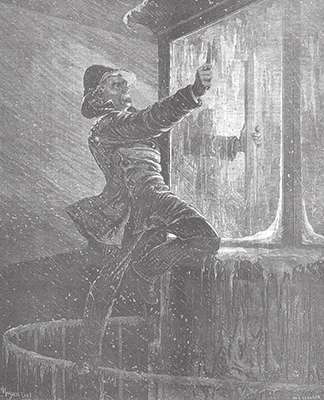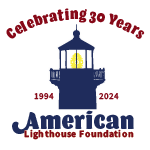
Engraving of Keeper Ida Lewis tending the light at Lime Rock Lighthouse in Rhode Island.
(ALF archives)
The following comments in regards to lighthouse keepers were made in the Report of the Officers Constituting the Light-House Board, 1852. The report examined the condition of the Light-House Establishment of the United States (during the control of Stephen Pleasonton, Fifth Auditor of the U.S. Treasury Department at the time) under the Act of March 3, 1851.
According to the Light-House Board under the section of “Keepers”…
“One of the most important steps, after establishing a light-house, is the selection of a suitable keeper, for upon him depends, in a great measure, the efficiency and steadiness of the light under his care; the more so, as but one keeper is allowed to each establishment on our coast, excepting in the case of a few southern lights.
“Thus it becomes necessary for these functionaries to leave their beds at night to examine and trim their lamps – a sacrifice of personal comfort which few of them are willing to make. The usual routine of their practice consists in lighting up at twilight, and then trimming between eleven and twelve at night; after which, the lamps burn or not, as the case may be.

Engraving of a keeper clearing snow and ice from a lantern pane.
(ALF archives)
“It is therefore no uncommon occurrence to see a light gradually disappear between three and four o’clock in the morning. The best keepers are found to be old sailors, who are accustomed to watch at night, who are more likely to turn out in a driving snow storm and find their way to the light-house to trim their lamps, because in such weather they know by experience the value of a light; while on similar occasions the landsman keeper would be apt to consider such weather as the best excuse for remaining snug in bed.
“One of the greatest disadvantages attendant upon the obtainment of good keepers is the rate of salary allowed, which, in this country, will not command the services of intelligent men, such as are required to do justice to a valuable and costly apparatus, when such is entrusted to them.”

